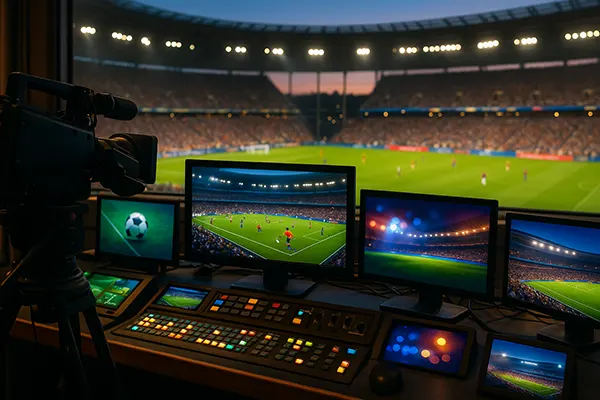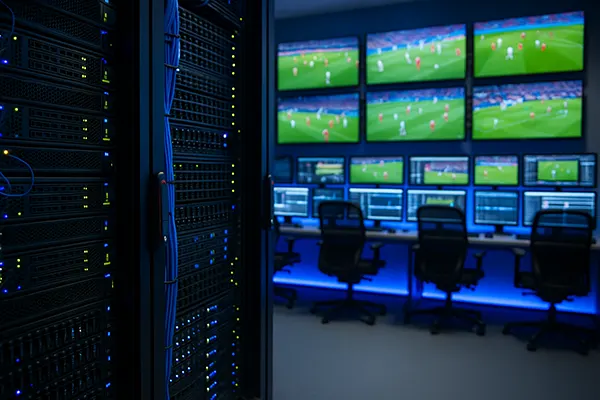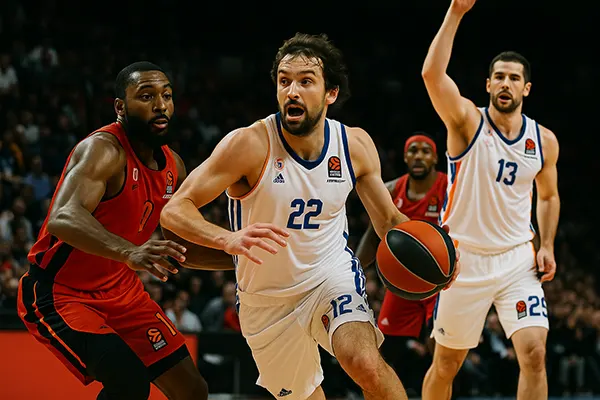Broadcast Rights and Major Sports Leagues: A New Wave of Structural Change

Across global sport, the market for broadcast rights is entering a period of fundamental transformation. The shift is driven by renegotiated long-term contracts, expansion into additional territories, the rise of direct-to-consumer models, and intensified competition between traditional broadcasters and technology-driven providers. As 2025 unfolds, the industry faces complex challenges linked to monetisation, anti-piracy protections, global audience retention and regulatory compliance. The dynamics shaping these changes are not temporary; they signal a transition toward a more diversified and strategically controlled rights ecosystem.
Economic Drivers Behind Rights Reallocation
The financial landscape of sports broadcasting has shifted due to escalating production costs, league-level commercial strategies and renewed efforts to ensure revenue stability. Major leagues—including the Premier League, NBA, NFL and UEFA competitions—continue renegotiating rights packages with a stronger focus on global reach and multi-platform distribution. This has altered contract value models, emphasising guaranteed minimum payments combined with performance-based incentive mechanisms. As a result, rights holders take a more analytical approach, using market data to forecast long-term profitability.
Another factor reshaping the sector is the acceleration of international licensing. Since 2023, leading leagues have expanded into secondary territories to diversify income streams and reduce reliance on single-market deals. By 2025, this strategy has matured into multi-regional clusters, where rights are sold collectively across groups of countries rather than through fragmented bilateral contracts. The approach strengthens negotiating power and allows leagues to align package structures with regional audience behaviour.
Technology providers entering sports distribution have also influenced rights valuations. Their data-driven models allow for targeted advertising and detailed viewer segmentation, which increases commercial value for rights holders. This creates a competitive environment in which traditional broadcasters must offer broader service bundles, improved streaming reliability and enhanced user experiences to remain viable in negotiations.
Shift Toward Long-Term Stability and Revenue Guarantees
Long-term deals have become a central priority for major leagues in 2025. They provide predictable cash flows and reduce exposure to short-term market fluctuations. The Premier League’s most recent domestic rights cycle, for example, followed a similar approach by locking broadcasters into multi-year contracts with index-linked adjustments rather than sudden renegotiations. This reduces volatility and strengthens financial planning for clubs and organising bodies.
Guarantee provisions have also become more detailed. Rights agreements increasingly include clauses covering minimum production standards, service uptime thresholds and technology upgrade commitments. This ensures that broadcast quality remains consistent as viewing habits evolve and as leagues adopt more sophisticated virtualisation tools, multi-camera formats and data-integrated graphics.
In addition, rights holders now prioritise flexibility within agreements. Many contracts provide options for sublicensing, digital expansion or mid-term renegotiation if technological innovations significantly alter market conditions. This ensures that both parties remain aligned with industry standards without requiring complete replacement of existing arrangements.
Technological Evolution Reshaping the Distribution Environment
The convergence of streaming technologies with traditional broadcasting has fundamentally reshaped how rights are allocated and delivered. Hybrid distribution models, which combine terrestrial, satellite and digital delivery, now dominate major markets. These models allow leagues to segment audiences based on consumption habits, offering high-value content through premium subscriptions while maintaining broad accessibility for free-to-air coverage where regulations require it.
Enhanced streaming infrastructure has improved reliability across peak-load events. By 2025, most major providers have implemented low-latency streaming protocols and adaptive bitrate systems that stabilise live feeds during high-traffic periods. This shift has strengthened confidence among rights holders, enabling them to package digital-exclusive content such as behind-the-scenes streams or alternative commentary feeds.
Artificial intelligence has also become a key component of content management. AI assists with automatic highlight generation, multilingual audio layers and real-time performance analytics. These technologies improve fan engagement and provide leagues with additional monetisation routes, particularly through data partnerships and region-specific content variations.
Anti-Piracy Measures and Regulatory Adaptation
The surge in digital broadcasting has increased the need for advanced anti-piracy mechanisms. In 2025, leagues employ real-time watermarking, enhanced takedown systems and coordinated enforcement with international regulators. These tools allow rights holders to act within minutes of detecting unauthorised streams, protecting commercial value and ensuring contractual integrity.
Regulatory frameworks have also adapted to modern distribution methods. Many territories now require transparency in sublicensing arrangements, viewer-data handling and advertising segmentation. This ensures that rights packages comply with broader consumer-protection standards and data-governance legislation. As a result, rights negotiations increasingly involve legal specialists alongside commercial strategists.
Cooperation between regulators, broadcasters and leagues has become more structured. Cross-border agreements facilitate coordinated enforcement during major tournaments, particularly those with high global demand. These frameworks help stabilise the market and preserve the value of legitimate broadcasting services.

New Commercial Models Emerging in 2025
The industry’s commercial architecture is evolving toward mixed-revenue structures. Subscription models remain central, but rights holders supplement them with transactional offerings, regional micro-subscriptions and dynamic pricing for premium matches. This approach allows audiences to choose between long-term access and flexible pay-per-event options, which increases total revenue capture across diverse demographics.
The introduction of league-operated direct-to-consumer services represents another shift. Several major leagues now operate their own subscription products alongside traditional broadcasting partnerships. These services offer tailored content packages, multilingual coverage and exclusive matchday footage. While traditional broadcasters retain core rights, league-owned services create an additional layer of engagement and strengthen brand ownership.
Collaborative commercial models are also expanding. Some leagues adopt shared-revenue initiatives with broadcasters, using performance-based metrics such as subscriber retention or international audience growth. This aligns incentives and ensures that both parties actively invest in marketing, production quality and technological improvements.
Impact on Fans and Global sporting Accessibility
As commercial models diversify, accessibility has become a leading concern for regulators and fans. In several markets, authorities have increased oversight to ensure that major events remain widely available. Balancing commercial value with public access requirements remains a central issue, particularly for tournaments with significant cultural impact.
Fan behaviour has changed significantly due to fragmented distribution. Supporters often subscribe to multiple services to follow leagues across domestic and international competitions. Rights holders respond by offering consolidated bundles or cross-platform authentication to reduce barriers between services. These solutions are expected to become more prominent as multi-league partnerships expand.
The introduction of enhanced matchday features—such as real-time analytics, multi-angle camera feeds and regional language options—has enriched fan engagement. These additions contribute to stronger loyalty and higher viewership, which in turn support the long-term sustainability of leagues and broadcasters navigating a competitive marketplace.




